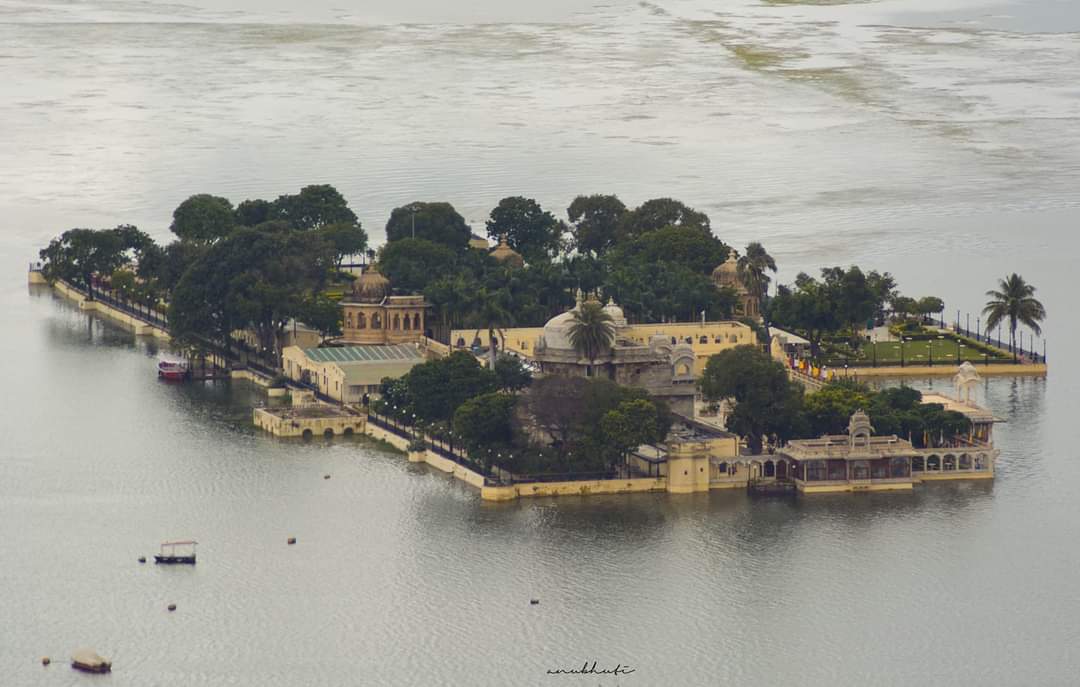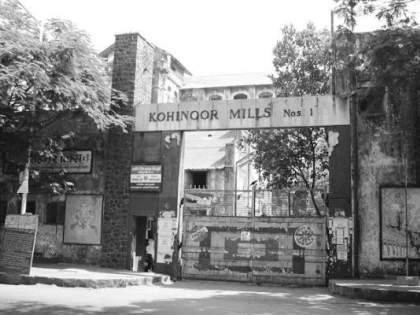
One Day, back in school,
For a biology class, we were to bring one leaf and one graph paper.
Curious as we were, most of us made it on time, fully equipped.
As per the instructions we carefully traced the leaf on the graph paper.
“Now, sum up the total number of squares within the traced profile.”
That’s it?
Lo! We were now in capacity to state the unit area that my leaf called its territory.
Why at all did we do this in botany?
I never asked. I never found.
Today too, I have a square grid. A large graph paper spread across the city of Mumbai.
I am to find, within this grid, one green leaf, one green territory, my space in the city.
Mumbai.
A city which is driven by money, is now stacking concrete like never before. It seems that the entire city is under-construction. Money-philic men boldly mark footprints so easily here in Mumbai, but often we find them imprinted on the urban-dust, while we were expecting only a clean urban-sand.
Approximately 350 years ago, an archipelago of seven islands, covered with extensive forest, was together called Bombay. (Shanon, 2009) Over time, we shaped it into a peninsula, with man-made reclamations. We were probably hoping to adapt the terrestrial quality amidst the islands, but now that we see, islands have merged so well amongst the piled on, that we can barely identify the primitive.
It has been dramatic ever since. You and I know of the linearity of this city, and how transportation has been its spine. We have had activists, architects, conservationists, and all the soft-hearted who spoke in resistance to the hard-blown concrete. However, this city is competitive. As a matter of fact, we are branching nerves, below and above, dense and solo, right and left, on paper and beyond. Yet, we know, we are missing it.
|Enquire|
I often wonder, while I roam with a bare head, in the streets of Mumbai, why is architecture known as the mother of all arts? Isn’t art beautiful? If architecture is a fusion of art and science, where are the traces of them both? Why is the art of my city so blunt? A mixture of cement, aggregate and water is all we know in the name of science? Are we to point at the population growth, or the government policies, or the climate change, or the influx of migrants or otherwise a foreign rule? Blame games are indeed a refuge.
Today, Chinese real estate developers are accepting wheat, garlic and peaches as down- payment to help boost sales in their depressed real estate market. (ABP News Bureau, 2022) Are we heading back to the golden era where innocent bartering was enough to survive? Or such desperate attempts are to answer an overly built city? The Chinese were the most populated of all, and their desperate moves gave them an unanswerable situation.

India has outnumbered the growing population, securing a first stand in the race, and in it, is our congested Salsette island, which has an increasing number of unsold inventories, which has caused jaw-dropping, gradually shrinking rates in the real estate. (TOI, 2022)
After the Covid-19 pandemic, real-estate builders and developers have plunged in, to pour concrete as if we all were under-privileged and we all need housing, without which all of us would remain homeless. But the truth remains that they worked for their own privileges. Had the intentions been well directed, the graph would have been justiciable, where, if the housing is getting affordable, then there is a decrease in slums. Here, we have both ends multiplying.
|Correspondence|
A honeycomb, naturally built, is bound to have hovering bees, because it is them who built it. Now we have hexa-cells made of synthetic wax, so that bees can come, reside, and give us the yield. We are too producing cells in a financial capital. Multiplying, facilitating more people in our city, can multiply money, is merely a shallow, shortly-thought theme.
Pick any ceremonial, elite vicinity of Mumbai, and then zoom out. Large patches of blue asbestos can be easily traced. These ghettos of Mumbai are directly proportional to the luxury the city holds, when ideally it should be inversely proportional.
So, the wise men brought in Slum redevelopment schemes, affordable housing, inclusive housing under section 15, 33(8), 33(20) and many more in DCPR for 2023 and beyond. We therefore continued the man-demic.
For once even if we agree that all the inventories will be occupied as envisioned, where are the resources? Are the borewells sweet? Are the mangroves rooted? Is Vaitarna and Tansa lake overflowing? Do we have enough trees to breathe out our oxygen? Has our mithi river overcome her shiver? Environment issues are a different tangent altogether, one may conclude. However, these are the very basis of life.
“If cities and buildings are going to invite people to come and stay, the human scale will require new and consistent treatment. Working with this scale is the most difficult and most sensitive urban planning discipline. If this is neglected or fails, city life never stands a chance. The widespread practice of planning from above and outside must be replaced with new planning procedures from below and inside, following the principle: first life, then space, then buildings.” – Jan Gehl (Gehl, 2010)
The necessary order of starting with life and waiting with buildings has a reverse order in Mumbai, where we continue to focus on buildings, and wait for life.
Mumbai allows approximately 1 sq.m open space for every individual. (TOI, 2012) We have made our efforts to make the streets equal on every Sunday, run bicycles on BKC roads, paint graffiti under the bridges, add ‘I love my city’ selfie points, arrange long marathons across the city, yet we always have the thundering of the buildings under our feet.
If we are so focused on buildings, why is the city so ugly? If built forms have been the primary preference to reap profits, why can’t we flaunt them?
Have you ever considered bold, sun-lit images of grandeur for a city line in Mumbai? (Except its heritage) May be very rare. We all prefer the night- images, lit and shaped by artificial lighting, which conveniently hides the scars, bruises and hideous patches of Mumbai.
Have we tuned in to the imageability of higher probable developed cities? as Kevin Lynch warns. Have we surrendered to concrete just as we do for freshly baked hotcakes, as Laurie Baker quotes his concern? Is it the ever-fluctuating policies imposed on us that has given a ruckus in the name of a city?
Have we left no time to wait, look, learn from the already developed cities and the mistakes they outgrew, and then proceed? Why such a blind-fold act? Why such insensitivity to life?
|Direction|
Charles Correa says, “I believe in the cities of India. Cities are a centre of hope.” (Correa, 2010) His confidence bothered me to question, what is it that makes a city?
Yes, most of us continue to believe that a city is for the people, and by the people.
But, let us dig a little deeper.
Primordially, the seven islands belong to the kohlis (fishermen) and the paddy farmers, which today, are looked down upon. “By the mid 1850’s, Bombay had become a major colonial mercantile and industrial city, with cotton textile mills as the foundation of its economy, it was called ‘Manchester of the East’. The American civil war and the blockade of confederate ports made Britain largely dependent upon cotton from India. The opening of the Suez Canal in 1869 made Mumbai the closest Indian port to Europe and accelerated the city’s development; Bombay was transformed from a traditional trading and agrarian economy into a manufacturing town.” (Shanon, 2009)
Population surges happened not to appreciate the beauty of the seven islands, or feel the expanding horizons of the sea. Everybody flocked in because Bombay was turning into a money-making port forcefully, under invasions, which transformed it from its very root. Immigration and refugees increased so much that we established a twin city named Navi Mumbai.
Money, since then, has formed the fundamental nutrition for this city to thrive.
Now we can only sit back and wonder why is everybody so money- oriented.
What is money?
A human made transaction medium, which eventually fulfils needs. A question that every individual may ask oneself, probably in mathematical terms,
Do we like Money to be subtracted and divided?
or, we only wish to hear of its multiplication and addition?
The latter is picked every time, leaving no minority.
If a mind full of multiplication and additions are given a responsibility to create, he may always choose a prototype, or, a standard typology, devoid of experiments, to ensure its reproduction. One with a mindset so saturated, gives least importance to the actual needs of the topography and holistic growth of humanity. Such is the condition of real estate and all involved in it, and unfortunately, including us architects. The very art in the built forms reflects what is within us, the artists, potters, of Mumbai.
Metaphorically, architects may rejoice in calling themselves the potters, for they are moulding homes for people, but which wheel did they choose? The wheel must be stationed in one spot, I wonder. We only thumped and created, and are still creating the built forms, not knowing the potter’s lathe.
Creating, indeed, is not only a verb, it is a sensitive contribution we make to society.
Furthermore,
Nobody in Mumbai is a Mumbaikar. The roots of each person in this city are not in the city. Not because we are reclaimed, but each of us began their journey from a native, their native. The most prosperous is not a Mumbaikar, the one begging on the street is also not a Mumbaikar. The people will have a story of their own gaon, hometown, native place to share with a neighbour. So even a layman is not bothered by how the city as a whole is building up, for they have a backup of their own.
I live here, and nothing is so close to me as my own city. Irrespective of what happened in the past, liveability and life can probably preoccupy our minds, before we continue to multiply and add into the built environment. Of Course, innovations can infuse resilience to a city and make it liveable, but we need to do a lot of home-work on our intentions for a city to thrive at its best.
Those were not futile efforts back in school with a leaf, probably we were getting trained for the real grounds of Mumbai. It must be expensive for one leaf to stand with its identity in Mumbai, however,
It takes just One dream, One life, and One backpack,
because this city always has a home for each Human.
Sometimes just 1 meter square, closed.
|Bibliography|
ABP News Bureau. (2022, June 22). abplive. Retrieved from https://news.abplive.com/offbeat/wheat-or-garlic-as-down-payment-for-house-how-chinese-developer-is-trying-to-boost-property-sales-1538606
Correa, Charles. (2010). The Urban Manifesto. In C. Correa, A Place in the Shade (p. 135). Panaji Goa: Charles Correa Foundation.
Gehl, Jan. (2010). Life,Space, Building – in that order. In J. Gehl, Cities for People (p. 198). Washington DC: Island Press.
Shanon, Kelly. (2009). Reclaiming (The Urbanism of) Mumbai. Mumbai: Sun Academia.
Shanon, Kelly. (2009). Reclaiming Mumbai. In K. Shanon, Reclaiming ( The Urbanism of) Mumbai (p. 15). Mumbai: Sun Academia.
TOI. (2012, May 28). Time of India. Retrieved from https://timesofindia.indiatimes.com/city/mumbai/you-have-just-1-1-square-metres-of-open-space/articleshow/13585198.cms
TOI. (2022, August 7). The TImes of India. Retrieved from https://timesofindia.indiatimes.com/unsold-luxury-flats-weigh-down-mumbais-real-estate/articleshow/93403430.cms






